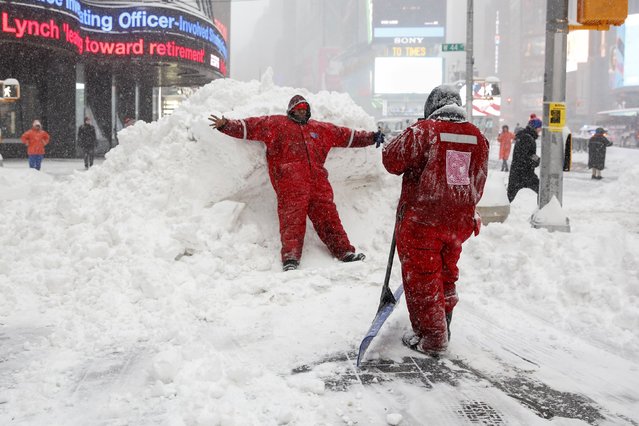
Members of the Times Square Alliance snow clearing team take a photo on a snowbank at Times Square in the Manhattan borough of New York January 23, 2016. A winter storm dumped nearly 2 feet (58 cm) of snow on the suburbs of Washington, D.C., on Saturday before moving on to Philadelphia and New York, paralyzing road, rail and airline travel along the U.S. East Coast. (Photo by Shannon Stapleton/Reuters)
24 Jan 2016 14:46:00,post received
0 comments







